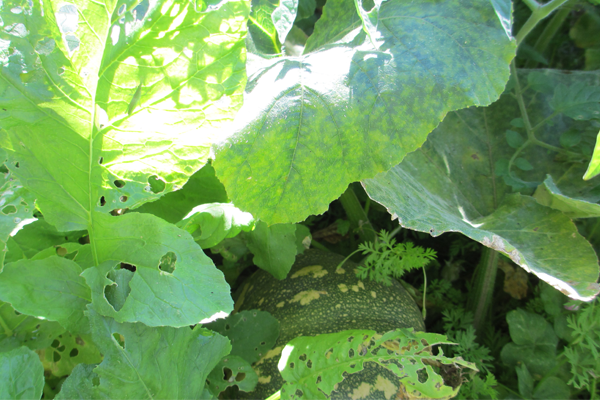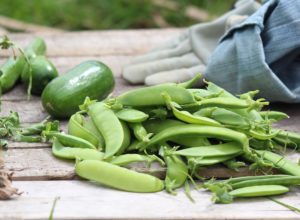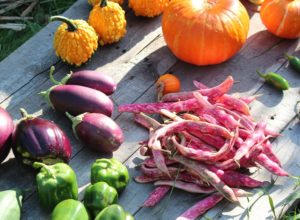March Garden Guide
Tropical Climate
What To Plant in March?
• Now may be the end of the wet season or it may not be. The turmeric (Curcuma domestica) and krachai (Boesenbergia rotunda) have flowered, which may indicate confused plants or the end of the wet season. I sometimes act on the assumption that the dry is approaching and plant accordingly while also being aware that I may lose the lot if it rains heavily again. This year I will wait as there is every indication of more rain. The sea temperature is still high and the monsoons are still active up north,
• You can try a few tomatoes and hope for the best. The Pink Thai egg tomato and tropic do best. I leave most of the tomato growing to the tomatoes themselves. They come up and flourish and I harvest when they are ripe. I don’t water or fertilise and they flourish. I call this efficient gardening.
• Now is a great time to plant fruit trees. I transplanted a Sapodilla (Manilkara zapota). It was in the way of a cyclone proof chook shed/plant and garden cyclone storage that I am currently building. I planted it as deep as possible in the new hole to increase the wind and drought tolerance of the tree. Sapodilla is reputed to be wind tolerant so I have planted it in the front yard to provide some cyclone protection for the house. I take all the precautions on the basis that I will then never get a cyclone.
• Keep planting the heat tolerant greens.
Maintenance
• In the hot humid weather of March the mulch breaks down very quickly so keep mulching.
• Continue to work on swales and drainage as there could be a lot more rain yet. We have not had a wet season this year, just some heavy rain events then back to high temperatures and high humidity with effective temperatures of 40 degrees celsius.
• Turn in any green manure before it flowers.
• Plant green manure crops in areas ready for the winter vegetables but not being planted now.
Weeds, Pests, and Disease
• Continue weeding and mulching.
• The grasshoppers are in plague proportions as is usual for this time of the year. I don’t do much about it as there are hundreds of little birds doing the work for me. Fabulous to see them at work hovering and chasing the bugs.
Harvest and Preserve
• Harvest turmeric and store. It can be stored in the ground but this year I have harvested some to preserve. I washed and scrubbed the fingers, and then I grated them on a micro plane and mixed them with honey. I have preserved them in alcohol, particularly vodka, in the past, but this is not an option these days. The alcohol was left over after cyclone Tracy and it took us years to use it all up as we are not drinkers.
• Harvest taro, cocoyams, celery top taro, sweet potatoes and cassava as required.
• The yard long beans are starting to produce a cop so keep harvesting daily to prolong flowering and fruiting. The yard long beans will grow well in the heat and humidity.
• Harvests available this month include bananas, longan, passionfruit, soursop, corn, pumpkin, limes, dragon fruit, chillies, coconuts, pumpkin fruits, shoot and leaves.
• This year I have grown a successful crop of soybeans. I have been harvesting by pulling up the whole plant and leaving it lying in well ventilated shade with the pods exposed to dry out for storage. I left it too late to harvest some for edamame.
Featured Permaculture Principle: Catch and Store Energy
(Read more about this principle here.)
• Why else would you work?
• Everything I do needs to provide at least three yields. The West Indian arrowroot (Maranta arundinacea) is probably the least useful plant in the garden but it provides (1) a silt trap when planted along the edge of an area, (2) it is aesthetically appealing as a green filler, (3) it provides an edible tuber which is not very palatable to the western palate as it is fibrous, (4) it will live under water for a few days and so it is a store of survival food.
• I allow plants to self-seed and grow to harvest with little or no input from me. Tomatoes, amaranth, fat hen, taro, cassava, Ceylon spinach all do this and are gratefully harvested to eat or to provide stock for the plant stall.
• My self-employment allows me to work from home which increases the yield from the house, uses pre-existing skills which have been developed over many years and provides a balance having one emotional and one physical element to my employment. It also allows me the flexibility and the independence which are essential for my peace of mind and wellbeing.
• Harvesting the weeds provides mulch as well as physical exercise and stretching and time to zone out and absorb the energy from the garden while keeping an eye out for edible plants which are growing in the weeds.
• The work that I do and the actions that I have taken over the years have all been geared to obtaining a yield, whether it is water stored in the soil, electricity generated from the sun, or income generated from growing and harvesting things or from my personal effort.
Kathleen Hosking
Web: www.solutionfocused.net.au









